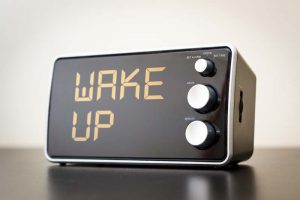Since the invention of the snooze button in 1956, millions of people have opted on many mornings for just a few more minutes of sleep. However, researchers of chronobiology warn that this extra sleep may be an actual health hazard rather than the blessing it seems.
The Endocrine System and Your Sleep Cycle
Humans are made to wake up slowly rather than at the call of an alarm. We go through several cycles at night, alternating between non-REM and REM sleep. In non-REM sleep, the brain has slower waves and performs many maintenance activities. In REM sleep, the brain kicks into gear, with an increase in brain waves and heightened production of hormones including cortisol and testosterone. As dawn nears, REM cycles become increasingly longer. When people naturally awaken according to their innate circadian rhythm, testosterone and cortisol are both high from these long REM periods, which supports wakefulness and alertness.
Cortisol, Testosterone, and Health

Testosterone also is crucial to good health. While it is widely considered a male hormone, it is important to both sexes. Testosterone supports a healthy hormonal structure; deficiencies of this androgen create diverse symptoms such as fatigue, weight gain and lowered sex drive. Testosterone is also important to the production of other sex hormones, such as estrogen.
Clearly, cortisol and testosterone are both important, but what does this have to do with the snooze button?
The Snooze Button and Your Hormones
When the alarm goes off, your brain is most likely engaged in REM sleep, which is the final phase of each sleep cycle. This REM sleep is stopped by your awakening to either turn the alarm off or hit the snooze button. People who hit the snooze button and fall back to sleep begin a new sleep cycle, in non-REM sleep. When they wake again in a few minutes, they may suffer an unpleasant side effect of being woken up mid-sleep cycle: sleep inertia.
Cortisol and testosterone levels fall quickly in non-REM sleep, back to less optimal levels for waking. This induction of sleep inertia in snooze button enthusiasts can cause sufferers to have lower mental function and even a higher risk of accidents for several hours after they finally arise. In addition, the cumulative effects of greeting the morning with low cortisol and testosterone day after day contribute to obesity, hypertension and a variety of other health issues.
An Alternative to the Snooze Button

While the snooze button may make us feel that we are getting a little more much-needed sleep, it actually can create health problems and make it even harder to get up and face the day. Choosing to snooze interferes with a healthy circadian rhythm, which is necessary for good health and prime mental function.







